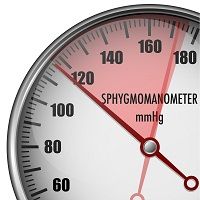Article
What the SPRINT Trial Results Really Mean for Hypertension Treatment
Author(s):
The long-awaited SPRINT trial not only included patients that are often left out of clinical studies, it also provided physicians with much-needed guidance on more effective blood pressure management strategies.

The long-awaited SPRINT trial not only included patients that are often left out of clinical studies, it also provided physicians with much-needed guidance on more effective blood pressure management strategies.
Nearly one in three adults in the United States has high blood pressure, but according to the Centers for Disease Control and Prevention (CDC), only about half of these patients have their condition under control. With such a significant percentage of people battling this potentially deadly condition, you would think that there would be many studies trying to uncover what can be done to safely lower blood pressure. The key words here are, “you would think.” But spokesman for the American Heart Association (AHA), Willie E. Lawrence, Jr, MD, chief of cardiology at Research Medical Center in Kansas City, Missouri, made it clear in an interview with MD Magazine that this is not the case.
“I think it’s disappointing” that there have been so few trials like this, said Lawrence, who is not one of the authors of SPRINT. This is one of the reasons that this study was such a game changer. It evaluated hypertension in a diverse patient population and produced significant findings, which were presented at the AHA 2015 Scientific Sessions in Orlando, Florida.
The SPRINT researchers screened nearly 15,000 patients and identified 9,361 with a systolic blood pressure of 130 mm Hg or higher. These patients, Lawrence explained, were considered to be high-risk: they were at least 50 years old, all had a 15% or greater 10-year risk of a cardiac event, and many of them also had a history of heart attack, chronic kidney disease (CKD), carotid stenting, or coronary artery bypass grafting, among other illnesses. However, an important factor in this trial was that it did not include patients with diabetes. Another key aspect of the analysis was that it incorporated subgroups that many other trials tend to leave out — including around 36% women, 30% African American, and 11% Hispanic.
The patients were randomly assigned to one of two groups and the average baseline blood pressure was 140/78. The goal of the first set of patients was to achieve a systolic blood pressure below 140 mm Hg (standard-treatment group) and the second set aimed for a target below 120 mm Hg (intensive-treatment group).

When it came to the outcomes, Lawrence (pictured left) revealed that, “a lot of this was surprising.” The benefit of more intensive treatment began to show at just one year — fairly early for the primary outcome. At the one-year mark, the average systolic blood pressure was 136.2 mm Hg in the standard-treatment group and 121.4 mm Hg in the intensive-treatment group. The benefit curve only became greater over the next four years, according to the report published in The New England Journal of Medicine.
The treatments lasted an average of 3.26 years, which was actually an earlier ending than expected. But the intensive-treatment group reached a significantly lower rate of primary outcome when compared to the standard-treatment group (1.65% vs. 2.19% per year) by that time.
“You will see some adverse effects as you aim for lower blood pressure” Lawrence continued. “It’s not surprising that people in the treatment group had light-headedness.” The researchers pointed out that serious adverse events, defined as fatal or life-threatening were observed more often in the intensive-treatment group. Notably, injurious falls were not reported in the population. So while the intense therapy was more successful in lowering blood pressure, it also raised concern for other issues.
As with any clinical trial, you have to weigh the cost and benefit. In this scenario, the cost was that there were some problems with kidney dysfunction. It raised enough of a red flag that further investigation needs to focus on kidney function when treating high blood pressure. The benefits, however, appeared much greater. Fewer people had heart attacks, congestive heart failure, and died of cardiac causes. Therefore, the treatment saved lives. “We think the benefit outweighed the risk,” Lawrence confirmed.
So what does this mean for clinical practice? Well, “It means we have better guidance overall,” Lawrence said. Although the results give great insight into the future of high blood pressure care, there’s a crucial point to take away from SPRINT. “It’s really important in a trial like this to say, who are the patients?” Lawrence specified. If a physician is used to treating a particular group of patients, who perhaps weren’t identified in the study, then it may not be best to apply the findings to their practice. So did the study provide great information? Yes. But it doesn’t mean that it should be followed verbatim.
This is certainly not an ending for blood pressure research, and actually, it’s not even a pause. The results from the SPRINT trial are being applied to AHA’s Target: BP initiative which is currently launching to control hypertension. The program already has early commitment from 50 hospitals and offices treating more than 18 million patients. Right now the target blood pressure of the program is 140/90, but an expert panel will use SPRINT to decide if that should goal should be changed. “Setting the goal is an easy thing to do. Creating a system of care that will allow us to aggressively control blood pressure is the big challenge,” Lawrence divulged.
In a world where not every person is meant to hit that 120/80 ‘ideal’ blood pressure, these findings can be carefully applied to clinician practice and to future research. By year 2020, the AHA hopes to witness a decrease of cardiac disease by 20%. And with more studies like SPRINT, it could very well become a reality.
“Here at the American Heart Association, we are very motivated by this trial,” Lawrence concluded.
What to Read Next >>> PROACT-4 Trial on Benefits of Troponin Testing for Acute Cardiovascular Disease



